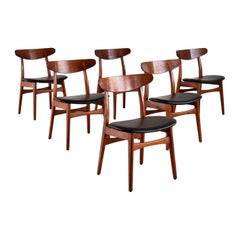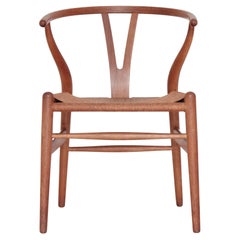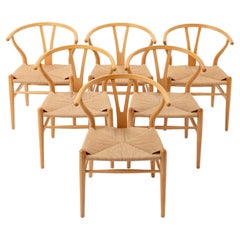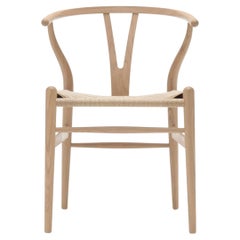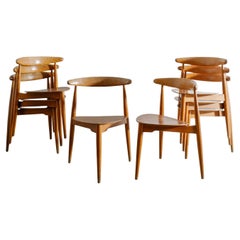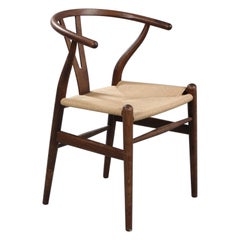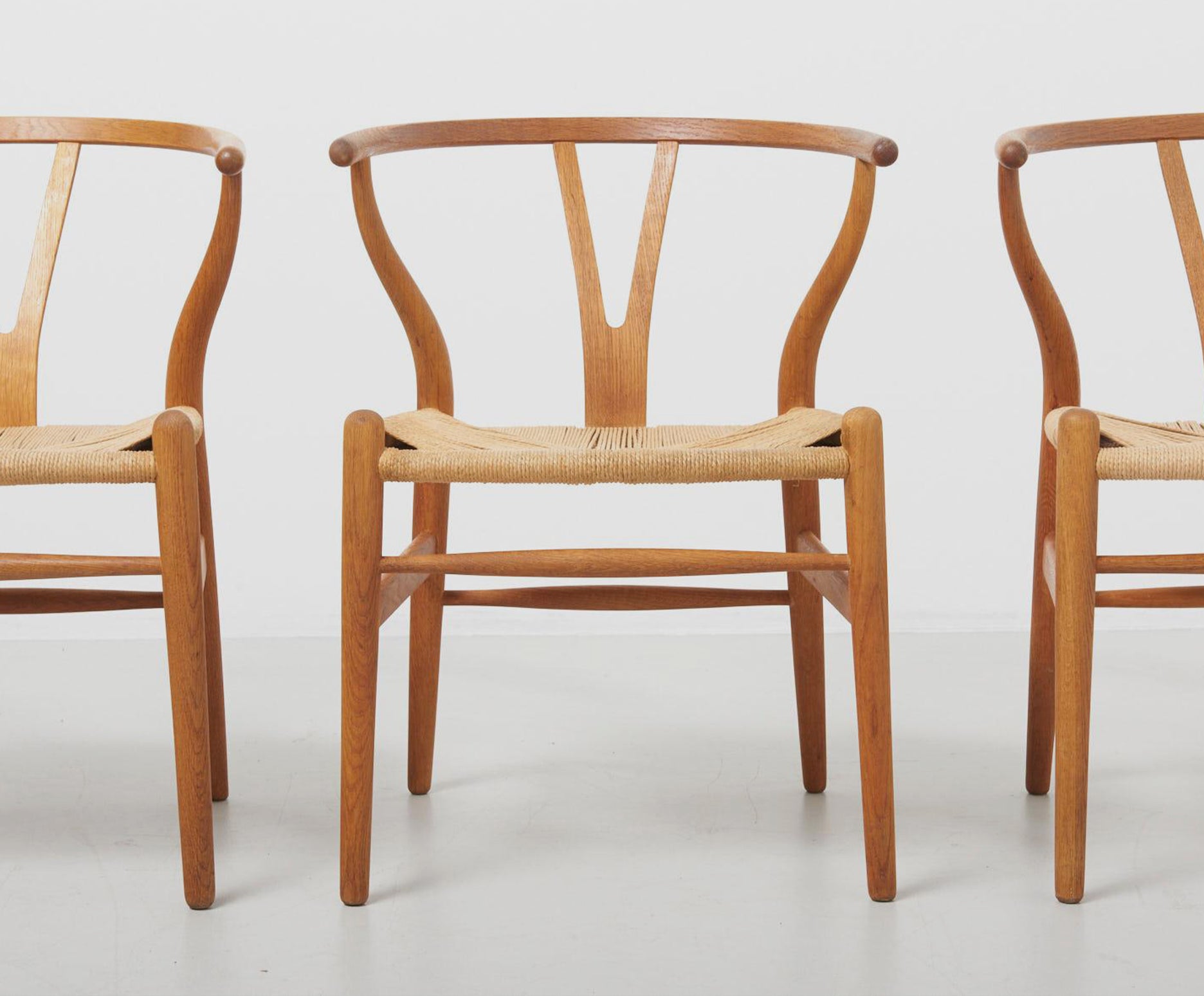
Wishbone ChairBy Hans J. Wegner
Although Hans Wegner’s (1914–2007) Wishbone chair stands as a classic exemplar of mid-century Danish design, its aesthetic roots actually begin farther east. In the 1940s, Wegner, then a recent graduate of the Royal Danish Academy of Fine Arts and working for Arne Jacobsen and Erik Møller, was inspired by a series of photos of Danish merchants sitting in Chinese Ming dynasty–era armchairs. The chairs were recognizable for the single, curved shape that made up their back and arms, a simplified style that intrigued the furniture maker.
For Wegner, the first result of the experiments that followed was his aptly named China chair, a solid wood model that Fritz Hansen began manufacturing in 1944. Soon after, Wegner was approached by Holger Hansen, son of Danish manufacturer Carl Hansen (no relation to Fritz), who wanted the designer to produce a similarly shaped piece for his family’s company. Production was slow following World War II, and Hansen wanted a chair with universal appeal that could be produced entirely in the company’s own factory.
This requirement — coupled with Wegner’s ambition to create a chair that weighed even less than the China chair — resulted in the development of the Wishbone and, with it, its most recognizable feature: a woven paper-cord seat, which takes Carl Hansen’s craftsmen over an hour to make.
Despite the intricate process behind it — the chair requires 100 steps to complete — the Wishbone, in its final form, boasts a graceful simplicity. This is largely thanks to its namesake Y-shaped back, a simple support structure that allows for the back and armrest to function as a single piece and dispenses with the need for multiple back slats, lending the chair an effect of weightlessness.
The sturdiness of the paper cord (all 120 meters of it per chair), meanwhile, makes the Wishbone both long-lasting and blessedly comfortable without the need for a cushion, which would diminish the impact of its pure form.
Today, the Wishbone — official name, CH24 — is one of the most recognizable seats in the world, and it has been in continuous production by Carl Hansen & Søn since its 1950 debut. The company offers it in its original bent oak and natural seat as well as in variations of that model.
For Carl Hansen & Søn’s 110th anniversary in 2018, the company released a select number of Wishbone chairs in eight limited-edition colors, a testament to the chair’s lasting legacy.
Wishbone Chair
Vintage 1950s Danish Mid-Century Modern Dining Room Chairs
Leather, Foam, Oak, Teak
Vintage 1950s Danish Scandinavian Modern Chairs
Papercord, Oak
Vintage 1970s Danish Mid-Century Modern Dining Room Chairs
Papercord, Oak
21st Century and Contemporary Danish Mid-Century Modern Dining Room Chairs
Papercord, Wood, Oak
Vintage 1950s Danish Scandinavian Modern Dining Room Chairs
Oak, Teak
Vintage 1980s Danish Scandinavian Modern Dining Room Chairs
Papercord, Oak
Vintage 1950s Danish Scandinavian Modern Chairs
Papercord, Wood, Paint
Mid-20th Century Danish Scandinavian Modern Dining Room Chairs
Papercord, Oak
2010s Danish Scandinavian Modern Dining Room Chairs
Papercord, Oak
Vintage 1970s Danish Mid-Century Modern Dining Room Chairs
Upholstery, Wood
Vintage 1950s Danish Scandinavian Modern Armchairs
Leather, Papercord, Ash
Late 20th Century Danish Mid-Century Modern Dining Room Sets
Metal
Vintage 1950s Danish Mid-Century Modern Dining Room Chairs
Oak
Vintage 1960s Danish Scandinavian Modern Dining Room Chairs
Leather
Mid-20th Century Danish Mid-Century Modern Chairs
Papercord, Oak
21st Century and Contemporary Danish Mid-Century Modern Dining Room Chairs
Papercord, Oak, Wood
Vintage 1950s Danish Scandinavian Modern Dining Room Chairs
Oak, Cord, Papercord
Vintage 1960s Danish Mid-Century Modern Armchairs
Oak
21st Century and Contemporary Danish Mid-Century Modern Dining Room Chairs
Papercord, Wood, Oak
21st Century and Contemporary Danish Mid-Century Modern Dining Room Chairs
Papercord, Wood, Oak
Vintage 1950s Danish Scandinavian Modern Dining Room Chairs
Papercord, Oak
Vintage 1950s Danish Mid-Century Modern Dining Room Chairs
Straw, Oak, Teak
2010s Danish Mid-Century Modern Dining Room Chairs
Wood
Vintage 1960s Danish Mid-Century Modern Armchairs
Papercord, Wood
Mid-20th Century Danish Scandinavian Modern Chairs
Papercord, Oak
Vintage 1960s Chairs
Oak
Vintage 1970s Danish Scandinavian Modern Dining Room Chairs
Papercord, Oak
Early 20th Century Danish Mid-Century Modern Dining Room Chairs
Papercord, Wood
Vintage 1960s Danish Scandinavian Modern Chairs
Papercord, Beech
Mid-20th Century Danish Mid-Century Modern Dining Room Chairs
Papercord, Ash
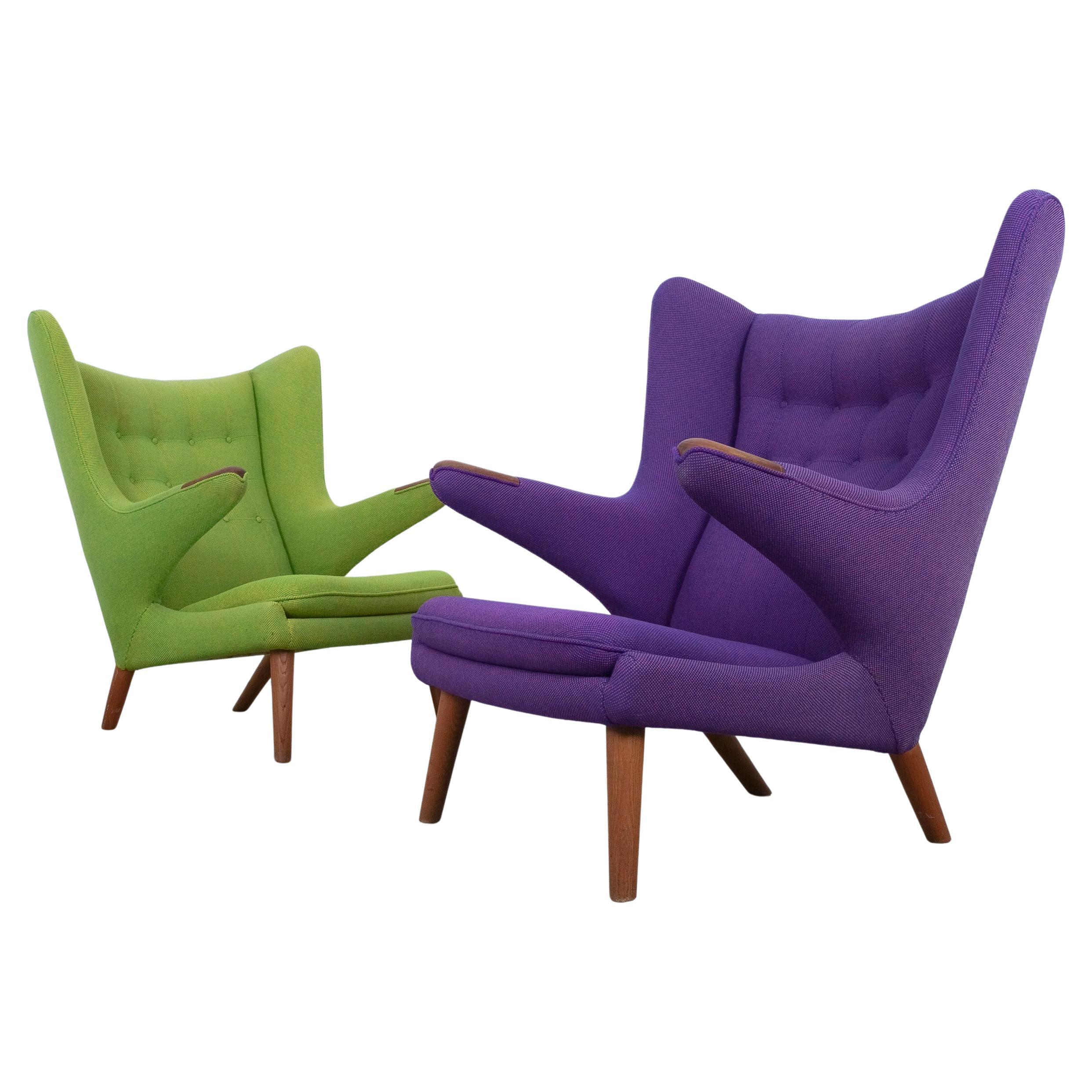
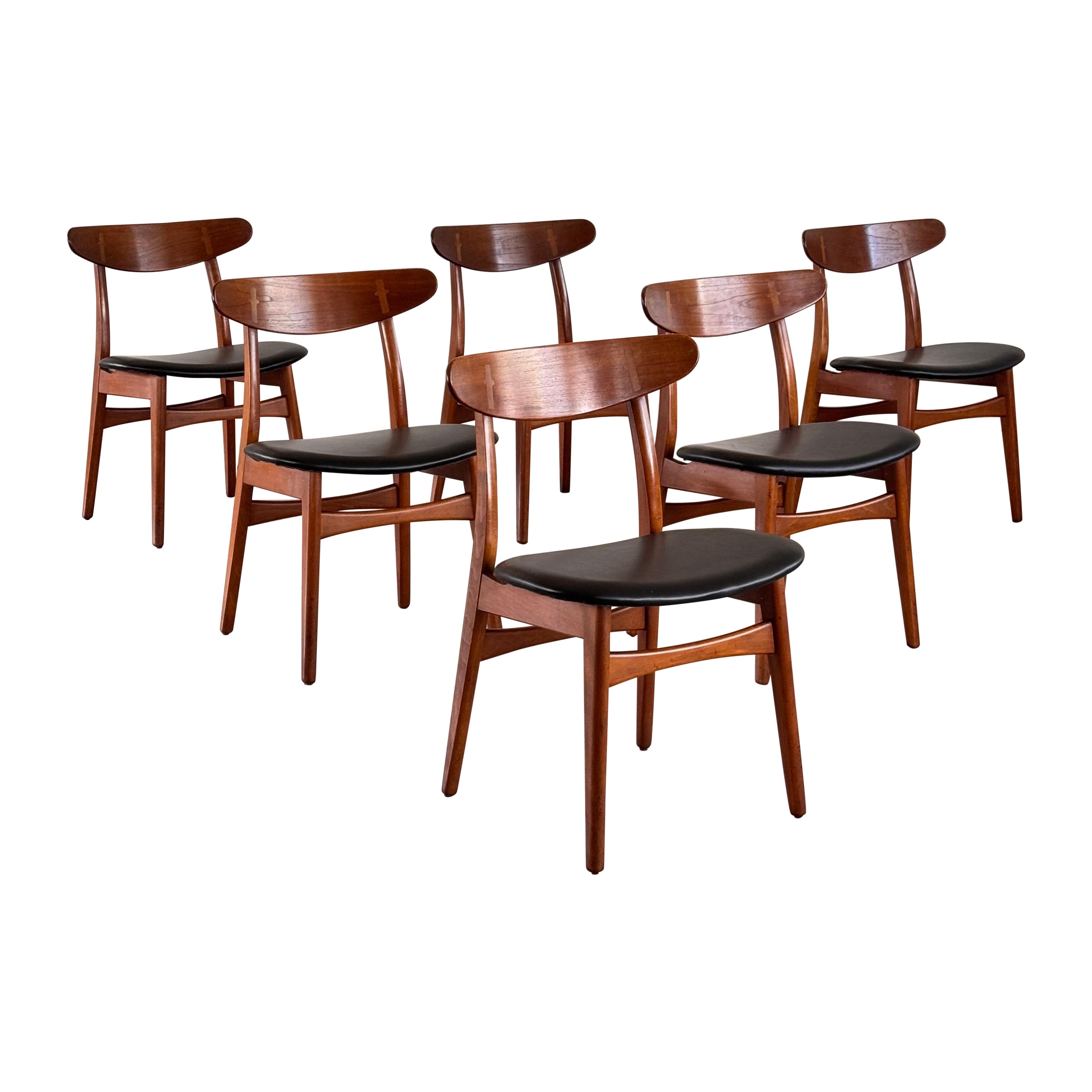

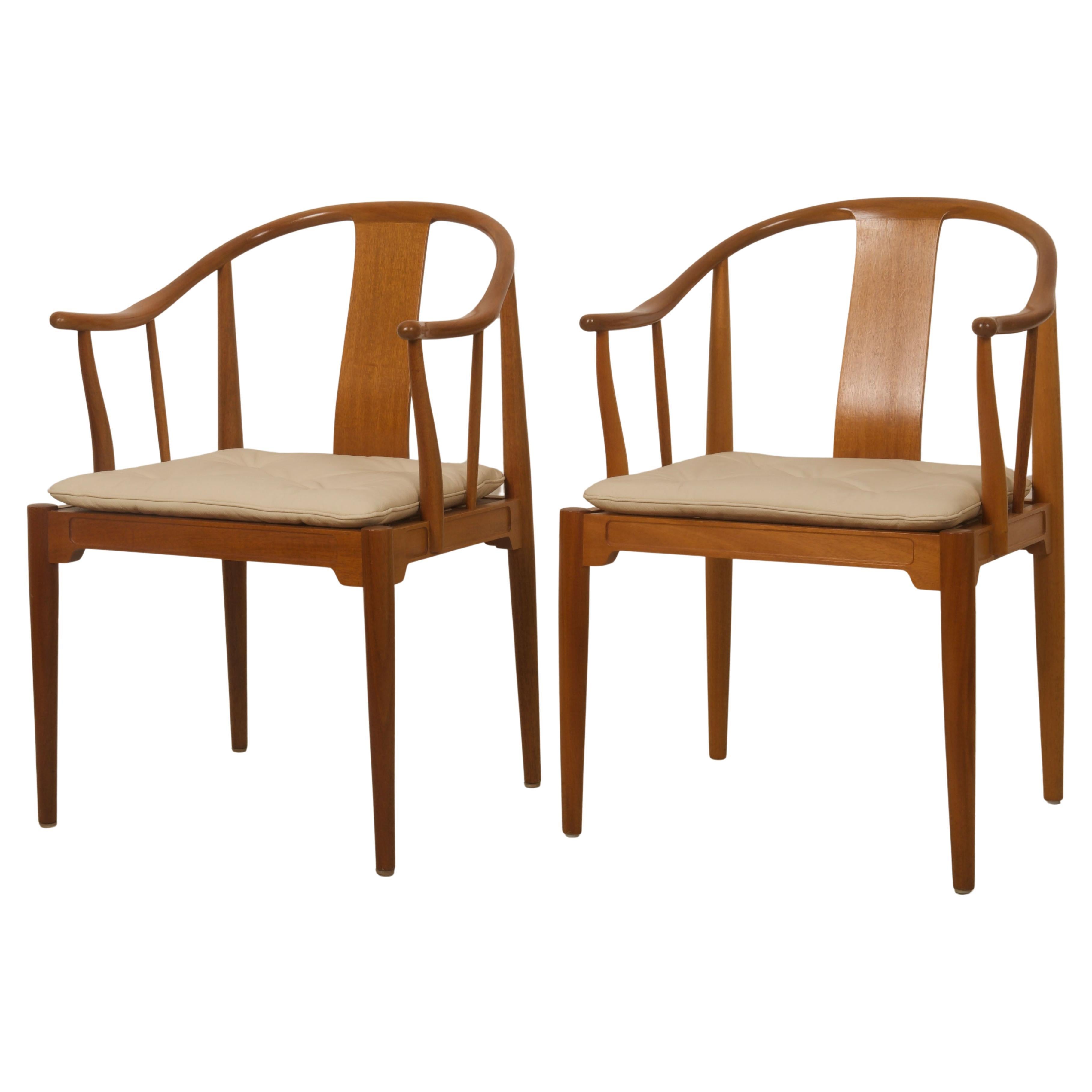
Read More
Are These the Five Most Important Mid-Century Modern Chairs?
A new video from Dezeen anoints them as the period's most significant seating designs.
The 21 Most Popular Mid-Century Modern Chairs
You know the designs, now get the stories about how they came to be.
Hans Wegner’s Wishbone Chair Still Feels Fresh, 70 Years after Its Debut
To celebrate the Wishbone’s 70th anniversary, Carl Hansen & Søn’s third-generation CEO, Knud Erik Hansen, shares some of the secrets behind the beloved chair.
